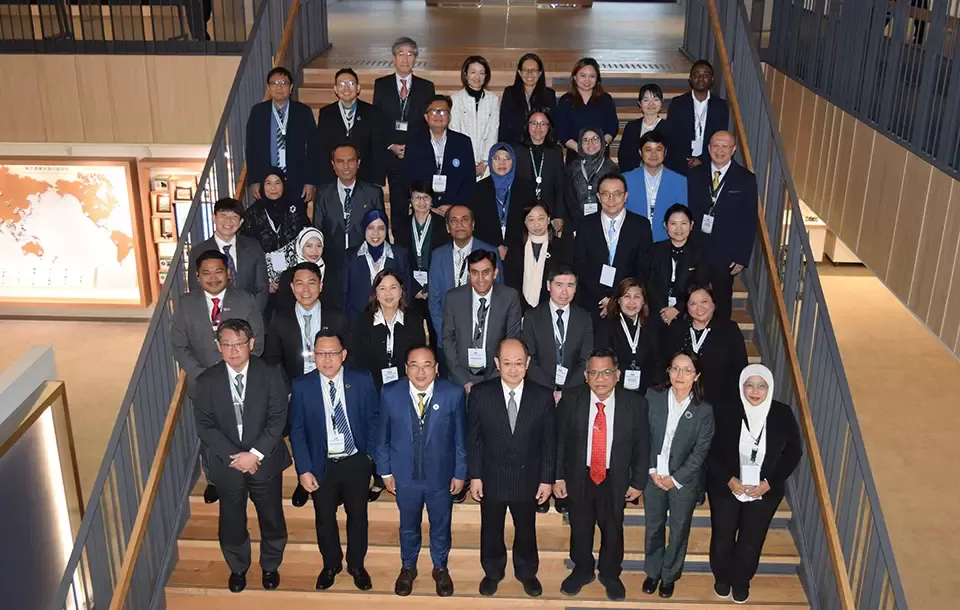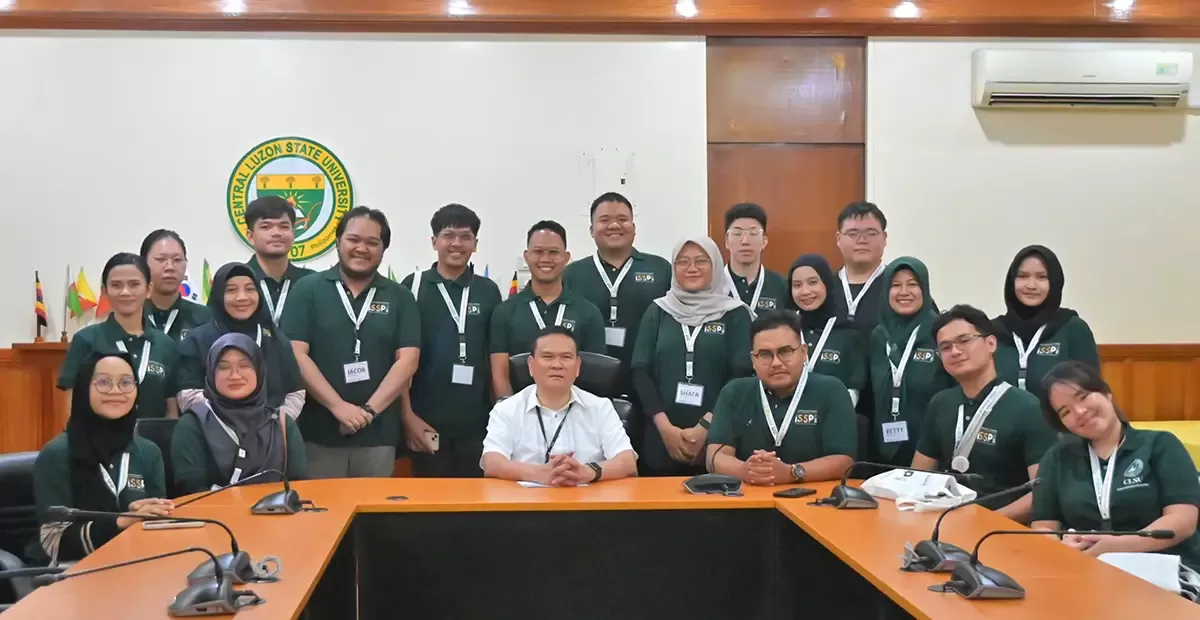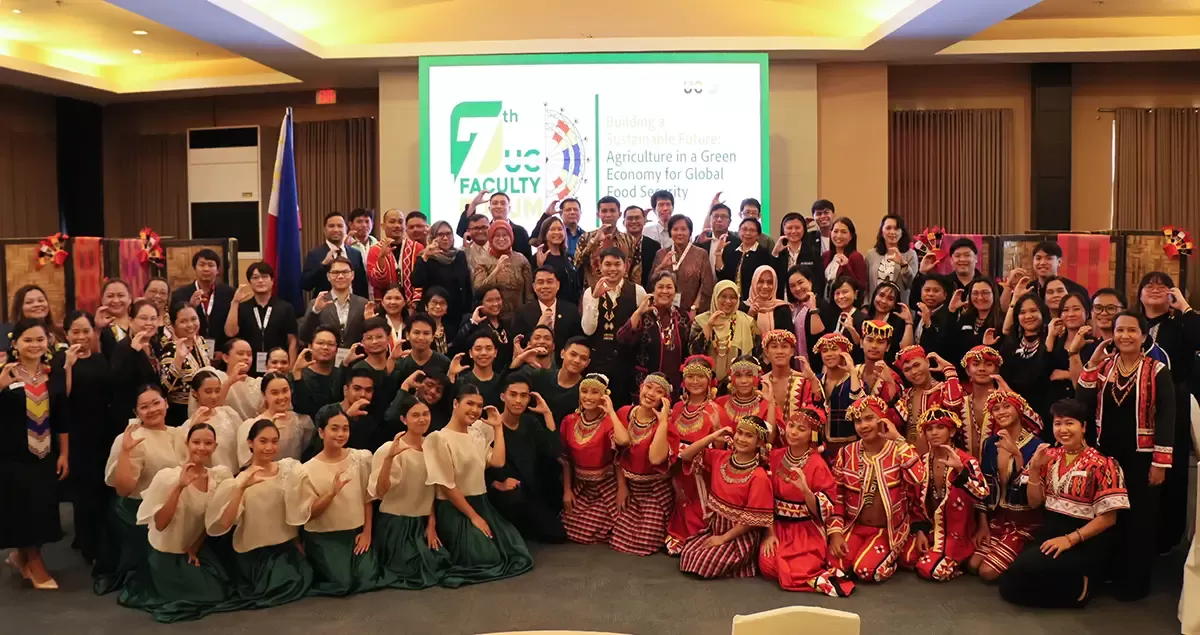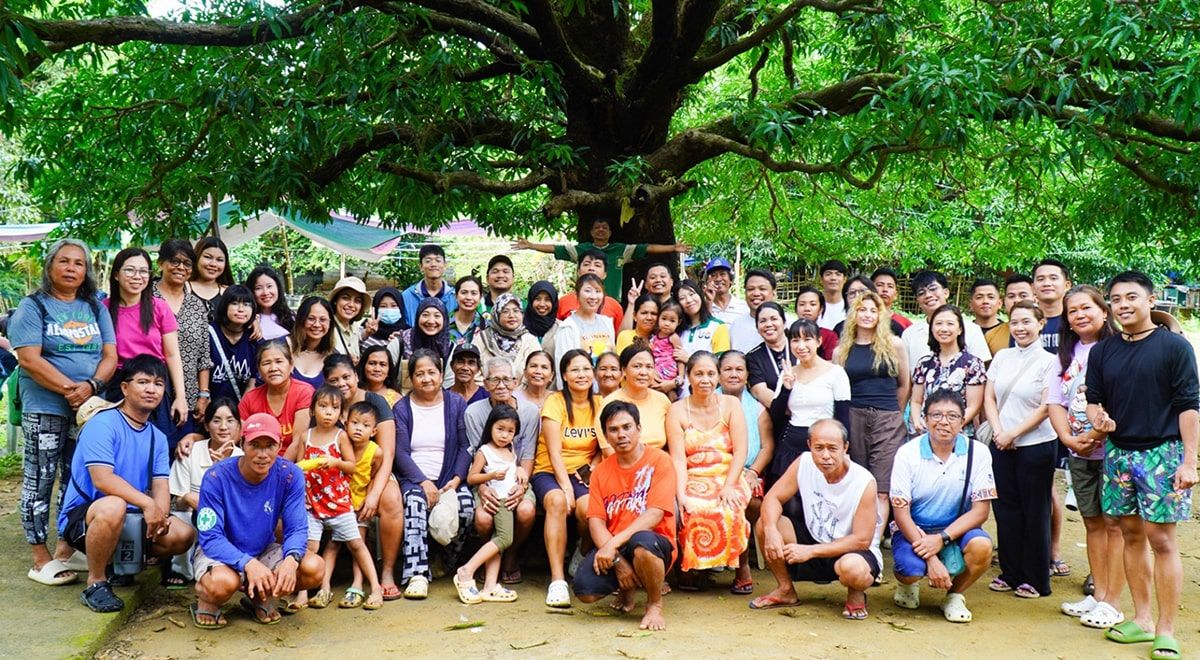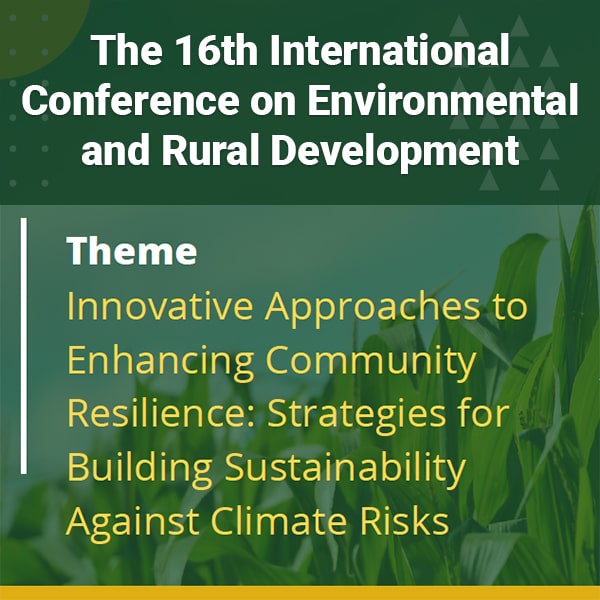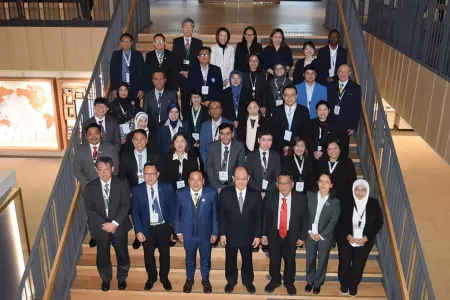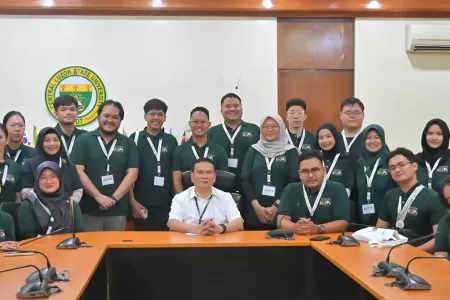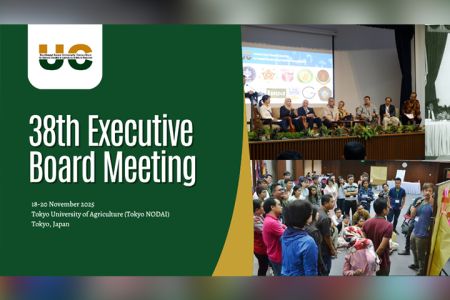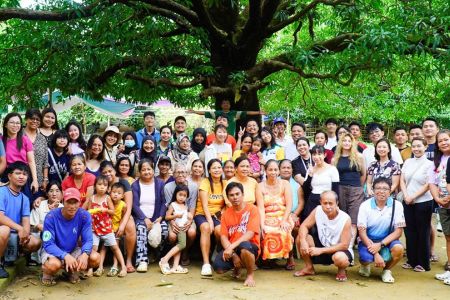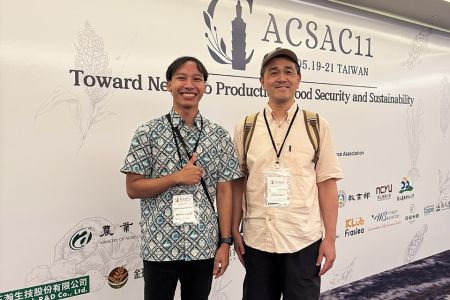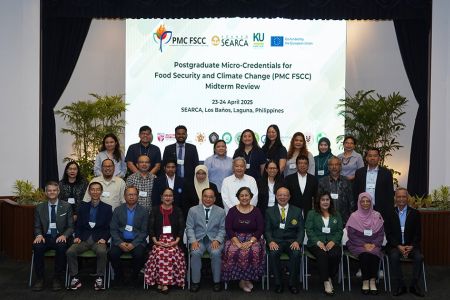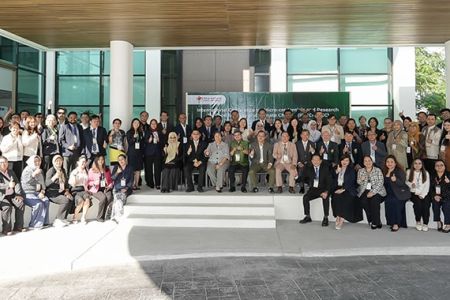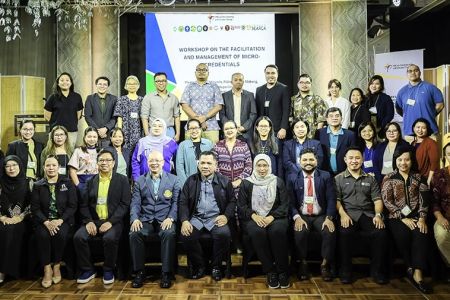SEARCA-ISAAA-UPLBCDC Publish Study on Adoptation and Uptake Pathways of Biotech Crops in the Philippines

A study that looks into the influences, knowledge seeking, and knowledge sharing dynamics of Filipino farmers in adopting biotech crops was co-published in March 2012 by the Southeast Asian Regional Center for Graduate Study and Research in Agriculture (SEARCA), the International Service for the Acquisition of Agri-biotech Applications (ISAAA), and the College of Development Communication (CDC) of the University of the Philippines Los Baños.
“Adoption and Uptake Pathways of Biotechnology Crops: The Case of Biotech Corn Farmers in Selected Provinces of Luzon, Philippines”, authored by Dr.Cleofe Torres, et al., focuses on how farmers came to adopt biotech corn, the process they go through when they acquire and apply the knowledge and practices in cultivating biotech corn, and the dynamics in their experience sharing, among others.
The study was conducted in Pangasinan, Isabela, and Cagayan, which are major corn producing provinces in the northern part of the country.
“Adoption” is defined as “how the farmers acquire and eventually apply the knowledge and practices pertaining to the planting of biotech crops.” “Uptake pathway” is the “process that captures how the information and knowledge about biotech crops are introduced to, or accessed, adopted, disseminated, and shared by the farmers to others.”
Economic consideration was a major factor found to influence farmers in adopting biotech corn. Particularly, the farmers’ reasons for adoption include: having fool-proof assurance of high yield and better income; influence of fellow farmers and relatives who are already adopting the technology; and their desire for their farms to be free from infestation of corn borers once the adjacent plantations become pest resistant biotech corn farms.
The study explained that there were some “late adopters” because of lack of capital and, for some farmers, hesitation. However, upon seeing the high yield and income of early adopters, these farmers switched to biotech corn and eventually shared the experience to other farmers and relatives.
Higher income was found to be the major benefit that came from the adoption of biotech corn. It consequently helped the farmers send their children to school, make farming activities easier and simpler, pay their loans and debts, etc. The farmers also noted that they have acquired “peace of mind” (assurance of harvests due to insect pest resistance) from biotech corn adoption.
Meanwhile, through an exercise called the “innovation tree”, a method that helps visualize and analyze the spread of an innovation or technology over time, between and among community members, the uptake pathways were constructed from two to four communities in each of the three provinces. It was found that multiple actors were involved in the circulation of knowledge and information on biotech corn.
Key players in the uptake pathways include the farmers, who are also the early adoptors of biotech corn. On the other hand, initiators of the uptake pathways were the technicians of seed companies, who introduced the technology to the farmers through demonstration farms and seminars. The traders were also major players as they endorsed the technology to the farmers and assured them that they would provide the necessary capital for planting. There were also “local ambassadors” who offer technical assistance, visit the farms and testify to the benefits of biotech corn.
Since traders and seed suppliers were identified as key partners in biotech extension, the study noted the importance of including the private sector in extension services and education, as well as field demonstrations and knowledgeable extension workers.
The study also noted that with their positive experience in biotech corn adoption, the farmers were resolved to continue adopting the technology, as well as other biotech crops such as the fruit and shoot borer resistant Bt eggplant, once these are commercialized. These farmers were also stated to be keen to learn more about biotech crops, hence the need for more effective biotech education endeavors.
SEARCA Director Dr. Gil C. Saguiguit, Jr., ISAAA Global Coordinator Dr. Randy A. Hautea, and CDC Dean and Project Leader Dr.Cleofe S. Torres, wrote in the study’s foreword that after more than 15 years of global commercial use, biotech crops have demonstrated the immense benefits they can contribute in terms of economic productivity, environmental protection, and upliftment of the welfare of poor farmers in many parts of the world.
With appropriate biosafety regulations in place, the Philippines started planting biotech crops in 2003. The insect resistant Bt corn, the herbicide tolerant corn, and stacked corn, were reported in published studies and articles to significantly increase the yields and income of Filipino farmers, thus helping boost the corn industry of the country. In its decade of propagation, hundreds of thousands of Filipino farmers have used the technology, and almost two million cumulative hectares of farms grown to biotech crops in the country have provided solid and clear evidence that the approved biotech crops benefit the farmers.
Source: SEARCA-BIC|10 May 2012

